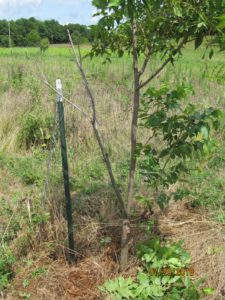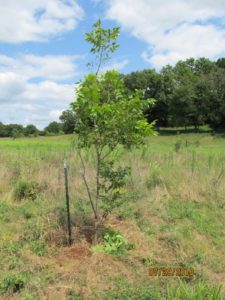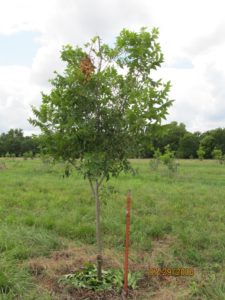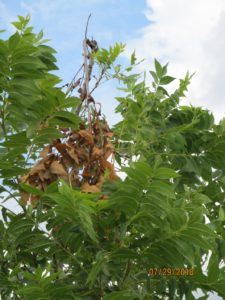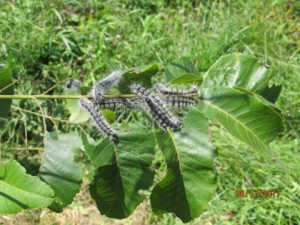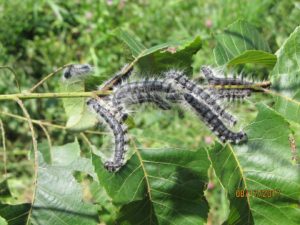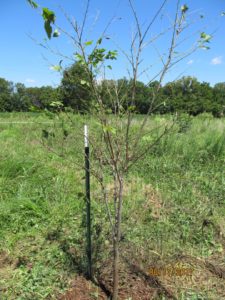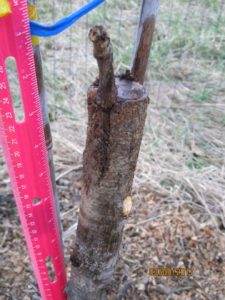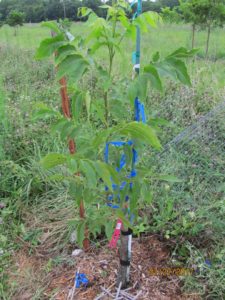All the normal maintenance tasks listed in the 2015 year in review posting continued through this year. Again this year I sprouted some some pecan seed nuts and Chinese chestnut seed nuts and grew them in pots. In November I transferred the potted trees to a straw bale fort and covered them with mulch to protect them during the cold winter months.
During October and November I planted 54 more trees from pots into the fields as follows:
– 12 grafted kanza pecan
– 6 grafted major pecan
– 25 seedling pecan
– 6 seedling shellbark hictory
– 2 grafted homewood Chinese chestnut
– 1 grafted gideon Chinese chestnut
– 1 grafted sauber black walnut
– 1 grafted sparrow black walnut
I am interested in growing cover crops to protect the soil. So, in August, September, and October I sowed mixes of the following seeds in various fields to study how they grow in different soils with different sowing methods and at different sowing dates.
– daikon radish
– cereal rye
– radish
– sudangrass
– winter peas
– hairy vetch
– triticale
Over the next few years I need to decide what vegetation under the trees will facilitate harvesting. Also, I hope to get rid of the fescue grass that robs the soil of moisture.
These last four years have gone by quite fast. But, I am still in the beginning stages of establishing a nut tree farm. There remains lots of work and lots of learning for future years.


